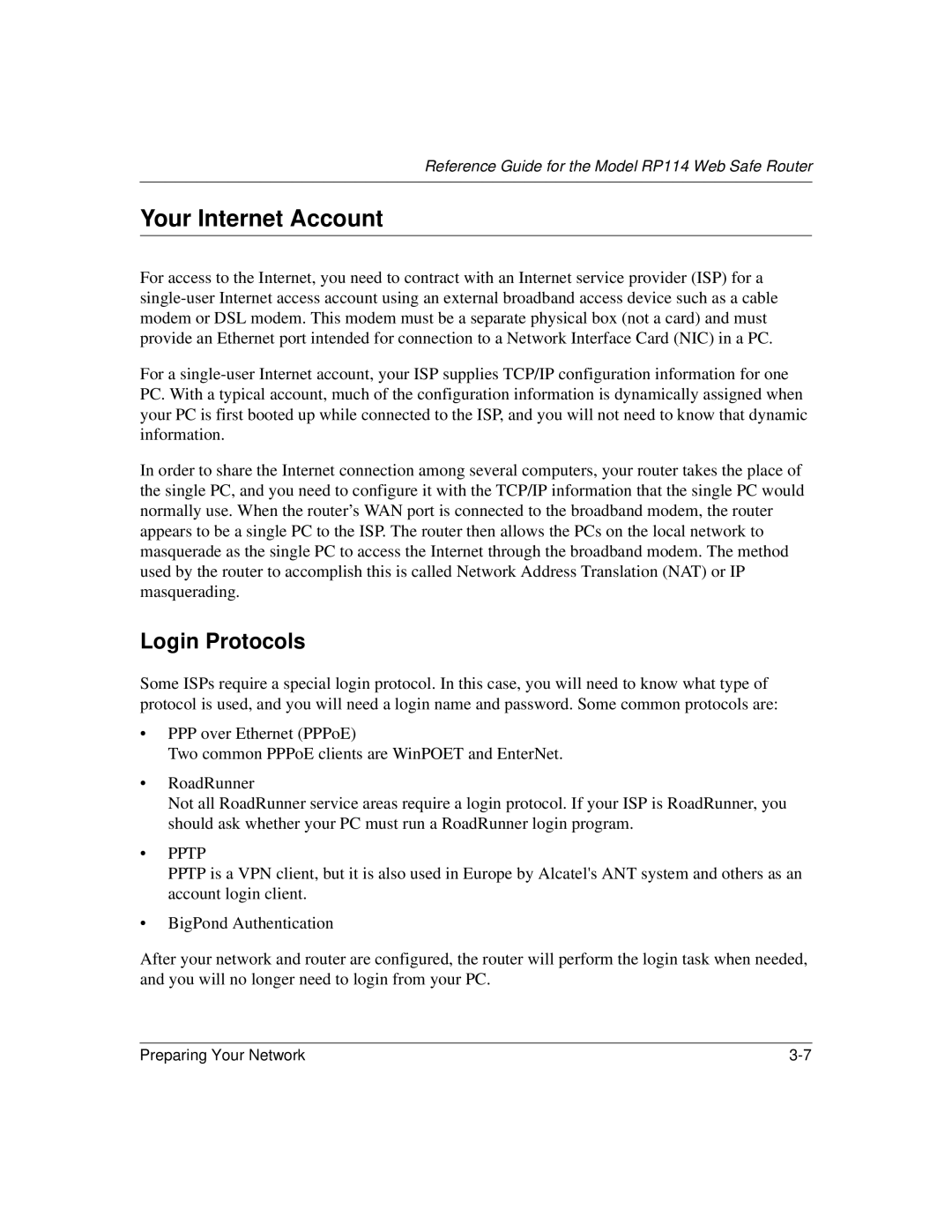
Reference Guide for the Model RP114 Web Safe Router
Your Internet Account
For access to the Internet, you need to contract with an Internet service provider (ISP) for a
For a
In order to share the Internet connection among several computers, your router takes the place of the single PC, and you need to configure it with the TCP/IP information that the single PC would normally use. When the router’s WAN port is connected to the broadband modem, the router appears to be a single PC to the ISP. The router then allows the PCs on the local network to masquerade as the single PC to access the Internet through the broadband modem. The method used by the router to accomplish this is called Network Address Translation (NAT) or IP masquerading.
Login Protocols
Some ISPs require a special login protocol. In this case, you will need to know what type of protocol is used, and you will need a login name and password. Some common protocols are:
•PPP over Ethernet (PPPoE)
Two common PPPoE clients are WinPOET and EnterNet.
•RoadRunner
Not all RoadRunner service areas require a login protocol. If your ISP is RoadRunner, you should ask whether your PC must run a RoadRunner login program.
•PPTP
PPTP is a VPN client, but it is also used in Europe by Alcatel's ANT system and others as an account login client.
•BigPond Authentication
After your network and router are configured, the router will perform the login task when needed, and you will no longer need to login from your PC.
Preparing Your Network |
